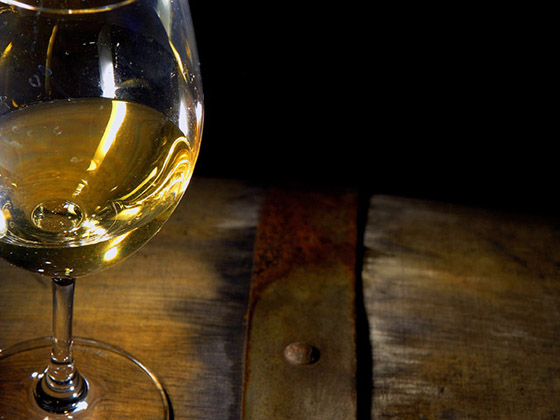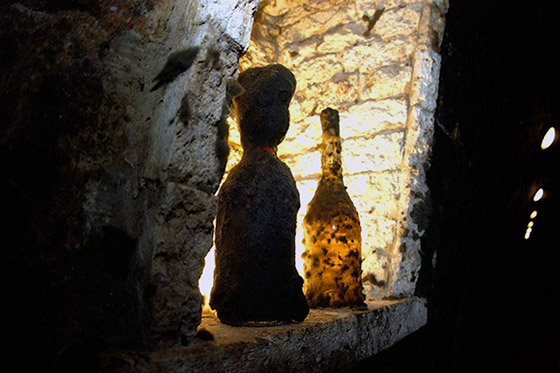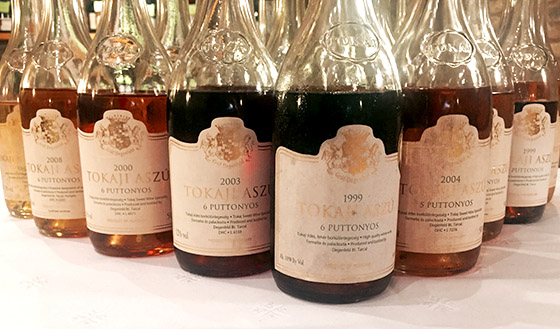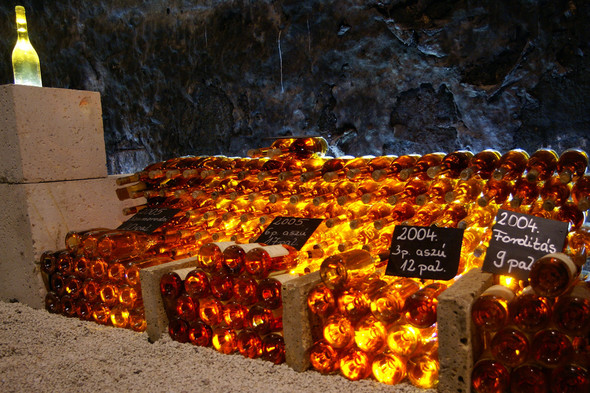If you do not know the history of Degenfeld family from Hegyalja region or simply the history of Hungary, you may easily think that this estate has not changed a bit for centuries. Neat vine rows, wonderful castle hotel, great cellar and processing unit. Actually, the story started in the 1990s…
These stories are all the nicer knowing that they can be started and finished as you like it. The Degenfeld family had large vineyards in the Tokaj wine region as early as the mid-1800s, but the turbulent times of the 20th century did not leave the estates, the country borders or even noble titles unharmed. The renovation of the estate became possible after the change of the regime, though not in the original estate parts and not for the family branch who possessed vineyards in the area in the 19th century. Count Sándor Degenfeld who was born in Cluj-Napoca received compensation notes as the heir of Count Pál Degenfeld, who died childless. He used the notes to revive family traditions in Hegyalja. Green vines occupy 35 hectares of the 100-hectare estate, while the castle hotel is housed in the vine-dresser school established upon royal order in the 1870s. The new owners have transformed it into a real castle.
As for the situation today, three of the most promising professionals in Tokaj lead the estate, namely Miklós Stumpf, István Varkoly, viticulturist and Sándor Zsurki, oenologist. However, it must be mentioned that there have been several personnel changes since the 1990s which could explain the style changes of the wines tasted. It seems obvious that there were two periods in the life of the winery when the longer, more intensive oak aging was considered expedient, which is not necessarily beneficial for their lighter, more rounded aszú wines. The dynamism of the estate’s szamorodni wines is a fresh experience similarly to the distance from the “five-puttony szamorodni” which has been getting trendy lately. All this projects the role the sweet szamorodni will play in the future. While the elegance of five-puttony aszú wines was more dominant young, the higher concentration and often more intensive acidity of six-puttony aszú wines have resulted in a better equilibrium with the barrel effect.
Considering the changes in Tokaj, we are looking forward to the answers this and similar estates will give to the problem of puttony numbers, and the style of aszú wines they will make in the future. This could be decisive in the pricing of the wines, as well. If they keep only one aszú wine per estate, the role of szamorodni could be more valuable causing great disadvantage to the prices of more elegant and available five-puttony aszú wines. These are serious questions, and hopefully the Degenfeld family will have good answers, as they did in the last 150 years.

Tokaji Szamorodni 2013 I 87 points
Pale straw yellow in appearance, medium intensity on the nose with aromas of ripe citrus fruit, peach, a little botrytis, oriental spices and herbs. Lively acidity on the palate, medium sweetness, but which is well balanced. Flavours of orange, apricot and a touch of musk. Long, very drinkable wine, with a little saltiness right at the end. True gastro wine. BGB
Tokaji Szamorodni 2008 I 86 points
Intensive nose of honey, with a touch of smoke, together with a little dried fruit, but the overwhelming aroma of honey comb dominates everything at the end. Full bodied, with rounded acidity and a silky texture. Flavours of citrus fruits together with dried apricot and peach, a little tea and a slightly floral character. Medium finish, dominated by attractive spiciness. ED
Tokaji Szamorodni 2007 I 86 points
Deep straw yellow in colour, with medium, lively nose, whose main aroma is botrytis, along with old-fashioned apricot jam and stone fruits as well as a little toast. On the palate, restrained sweetness together with racy acidity and a slightly austere structure. Flavours mirror the aromas. After a few moments, the wine rounds out a little. Oak dominates on the finish. BGB
Tokaji Szamorodni 2005 I 87 points
Restrained nose of a little mandarin, apricot jam and a touch of cardamom. Medium bodied on the palate with rounded acidity. As on the nose, citrus fruit dominates together with a playful floral bouquet and a touch of oriental spice. Very drinkable, well-balanced wine, with a slightly longer than medium finish. ED

Tokaji 5 puttonyos Aszú 2012 I 91 points
Medium straw-yellow in colour. A lively, youthful nose with fruity aromas of citrus fruit, peach and pear. Attractive botrytis, noticeable oak influence as well as a little perfume too. Bright acidity, nice mouth-filling texture, with a touch of tannin. Also flavours of youthful fruit to the fore, but a significant amount of sweet spice as well. An extremely attractive wine. BGB
Tokaji 5 puttonyos Aszú 2009 I 90 points
The nose needs a little time to open. It’s worth leaving it to aerate a little or taste it a little warmer, you will be greatly rewarded. After just a couple of minutes, aromas of mango, pineapple, mandarin, pink pepper, nutmeg and a little mint will also show themselves. Medium bodied, rounded acidity, flowing structure, although not very firm. The palate is a slightly more restrained than the nose. There is less citrus fruit and more dried peach and apricot. The acidity seems more racy in the otherwise very long finish; thus the citrus fruit are also prominent on the nose. ED
Tokaji 5 puttonyos Aszú 2004 I 89 points
Medium gold colour. Nose is medium lively, but very intense, with ripe apricot jam and botrytis to the fore. There is also a touch of aftershave and stone fruits. Extremely intense on the palate, with wonderful acidity; well balanced with significant sweetness. Flavours of tropical fruit are in the foreground, but botrytis and toasty oak are also evident. The latter may cause a little bitterness on the finish. BGB
Tokaji 5 puttonyos Aszú 2002 I 93 points
Deep, ripe nose of sandalwood, orange oil, black tea and dried fruit. Medium bodied on the palate with rounded acidity. The palate mirrors the nose. Due to the acidity, the citrus fruit is more intense, but attractive tertiary notes are already starting to appear. This is an exciting moment to taste this wine, in a kind of adolescent phase as it starts the long process of maturation. Well balanced with a long finish. ED
Tokaji 5 puttonyos Aszú 2000 I 90 points
Extremely deep gold in colour already with some hints of brown. Lively nose, surprisingly immediate citrus fruit character at the beginning, along with intense botrytis, oak, toast, aftershave and sweet spice. The full body is immediately apparent, with relatively lively acidity underpinned by a little tannin. Well balanced with a creamy texture. A toasty tension appears on the finish. Mature, attractive aszú with a sweet, salty delicacy on the finish. BGB
Tokaji 5 puttonyos Aszú 1999 I 89 points
Dark in colour, already heading towards coffee. Intensely oxidised on the nose, with notes of damp wood, pipe tobacco and a little caramel. A similar experience on the palate with clear tertiary notes, earthy flavours and rosehip, although there is still plenty of citrus fruit thanks to the high, crisp acidity. Full bodied with a long finish with citrus fruits and pipe tobacco also reflected. ED
Tokaji 5 puttonyos Aszú 1998 I 91 points
Sparkling, medium gold in colour, almost tea like in appearance. Lively nose, with botrytis the dominant characteristic, together with orange marmalade, some stone fruit and toasty oak. On the palate, an almost perfect structure: wonderful acidity, perfectly balanced and marvellous botrytis. In addition, the wine is lively and mouth-filling and the sweetness is not too cloying, although there is a slight toasty bitterness on the finish. BGB
Tokaji 5 puttonyos Aszú 1996 I 90 points
Incredibly pronounced aromas of cocoa, a touch of coffee, cognac cherry, black tea, plum jam and vanilla. Wonderfully intense acidity, medium bodied, with flavours of mint, anise, citrus fruit and earthy notes, together with oak spices. Very long finish, dominated by oaky notes. ED

Tokaji 6 puttonyos Aszú 2010 I 92 points
Bright medium golden colour. Lively nose, dominated primarily by earthy, forest floor and mushroom notes. Vivid botrytis, decidedly mineral, there is also a smoky meat character. On the palate, however, exceptional on the first sip; the wine has perfect acidity, balance and an elegant structure. Multi-layered, extremely attractive aszú, an everlasting diamond. BGB
Tokaji 6 puttonyos Aszú 2008 I 94 points
The nose is still fresh; along with the overwhelming citrus fruit, dried apricot is now becoming showing itself more intensively, as well as a little rosehip and a lovely minty, oaky spice character. Full bodied on the palate, with wonderful acidity and taut structure. Flavours of mint, anise, apricot, dried fruit, peach, pineapple, mango, a pinch of vanilla and nutmeg, a touch of clove and intense citrus fruit. Very long, marvellous wine. ED
Tokaji 6 puttonyos Aszú 2006 I 94 points
Bright, elegant, pale lemon in colour. Lively nose dominated by apricot, although attractively complemented by botrytis, minerality, aftershave and oak influence. On the palate, lively, but delicate acidity, and silky but characterful structure with plenty of ripe fruit. Perfectly creamy, mouth-filling structure. Complex and full bodied, but nevertheless lively and very drinkable wine, with an almost infinite salty finish. BGB
Tokaji 6 puttonyos Aszú 2003 I 91 points
Dark in colour with brown, tea reflections. Lovely mature aszú nose with citrus fruit, tea, a little musk, dried apricot, prune and nutmeg. Full bodied on the palate, lovely acidity, dominated predominantly by flavours of dried fruit and oak spice. Very drinkable with a long finish and a touch of pipe tobacco. ED
Tokaji 6 puttonyos Aszú 2000 I 89 points
Beautiful, seductive and bright gold in colour. The lively nose has surprisingly fresh citrus fruit, rich botrytis, ripe apricot jam, oaky vanilla and a touch of stone fruit. Beautiful, lively acidity with a rich, creamy structure and clear oak influence. Remarkably rich, long wine. It would be worth re-tasting later too. BGB
Tokaji 6 puttonyos Aszú 1999 I 92 points
Dark in colour. On the nose, tertiary notes already evident with a touch of yeast, rosehip, earthy notes and a little coffee. Full bodied, with vibrant acidity. Thanks to the acidity, the citrus character dominates the palate powerfully, underpinned with typical tertiary notes such as earth, tobacco and coffee. Long finish, which is a little drying due to the acidity. ED
Botond Gábor Bányai (Borigo) - thanks for the tasting notes!






